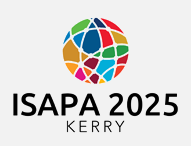Start Date
18-6-2025 9:00 AM
End Date
18-6-2025 10:30 AM
Abstract
Introduction Over six years, the Erasmus + funded IDEAL initiative encompassed two projects: “Intellectual Disability (ID) & Equal Opportunities for Active and Long-term Participation in Sport” (2018–2020) and “Inclusive and Equitable Sport for People with ID and/or Autism – IDEAL 2.0” (2022–2025). These projects aimed to promote sustainable inclusion in sports for individuals with ID/ autism, providing valuable insights into long-term strategies for promoting equitable access.
Methodology The IDEAL consortium involved 10 European research institutions and various (inter)national disability sport organisations (e.g., Virtus, International Paralympic Committee, Special Olympics). The initiative adopted a multi-phase, multi-method approach. The focus in the first phase was on identifying barriers and enablers through surveys and focus groups guided by the socio-ecological model, on personal, interpersonal and community level1. In the second phase these insights were used as a basis to develop and pilot inclusive practices and resources, e.g., incorporating digital (AI) tools to promote participation, develop a manual for coaches to train employability-related soft skills of athletes with ID/autism
Results Over six years, IDEAL identified recurring challenges hindering the inclusion of people with ID/autism in sport, such as insufficient coach-training, lack of awareness and stigma surrounding ID/autism in sports and lack of tailored supports. Key learnings included the necessity of tailored-made tools and interventions directly targeting the needs of the underrepresented population and the need for improved professional development resources for coaches. These strategies and resoruces were developed and pilotted in phase 2 of the project.
Conclusions The IDEAL initiative demonstrates the value of multi-institutional and multi-national collaboration in the area of APA for people with autism/ID. The projects provides new insights into the barriers and facilitators to sport among this population, will culminating in the development and dissemination of resources to systematically address these challenges.
References
1Marin-Urquiza, A., Burns, J., Morgulec-Adamowicz, N., & Van Biesen, D. (2023). Structure and Organization of Sport for People With Intellectual Disabilities Across Europe. Adapted physical activity quarterly : APAQ, 41(1), 126–152. https://doi.org/10.1123/apaq.2022-0212
Recommended Citation
Van Biesen, Debbie; Einarsson, Ingi; Healy, Sean; roldan, Alba; Morgulec, Natalia; and burns, jan, "From barriers to bridges: Key Learnings from the IDEAL Journey (2018–2025)" (2025). International Symposium of Adapted Physical Activity and International Symposium on Physical Activity and Visual Impairment and Deafblindness. 14.
https://sword.mtu.ie/isapa/2025/day3/14
From barriers to bridges: Key Learnings from the IDEAL Journey (2018–2025)
Introduction Over six years, the Erasmus + funded IDEAL initiative encompassed two projects: “Intellectual Disability (ID) & Equal Opportunities for Active and Long-term Participation in Sport” (2018–2020) and “Inclusive and Equitable Sport for People with ID and/or Autism – IDEAL 2.0” (2022–2025). These projects aimed to promote sustainable inclusion in sports for individuals with ID/ autism, providing valuable insights into long-term strategies for promoting equitable access.
Methodology The IDEAL consortium involved 10 European research institutions and various (inter)national disability sport organisations (e.g., Virtus, International Paralympic Committee, Special Olympics). The initiative adopted a multi-phase, multi-method approach. The focus in the first phase was on identifying barriers and enablers through surveys and focus groups guided by the socio-ecological model, on personal, interpersonal and community level1. In the second phase these insights were used as a basis to develop and pilot inclusive practices and resources, e.g., incorporating digital (AI) tools to promote participation, develop a manual for coaches to train employability-related soft skills of athletes with ID/autism
Results Over six years, IDEAL identified recurring challenges hindering the inclusion of people with ID/autism in sport, such as insufficient coach-training, lack of awareness and stigma surrounding ID/autism in sports and lack of tailored supports. Key learnings included the necessity of tailored-made tools and interventions directly targeting the needs of the underrepresented population and the need for improved professional development resources for coaches. These strategies and resoruces were developed and pilotted in phase 2 of the project.
Conclusions The IDEAL initiative demonstrates the value of multi-institutional and multi-national collaboration in the area of APA for people with autism/ID. The projects provides new insights into the barriers and facilitators to sport among this population, will culminating in the development and dissemination of resources to systematically address these challenges.
References
1Marin-Urquiza, A., Burns, J., Morgulec-Adamowicz, N., & Van Biesen, D. (2023). Structure and Organization of Sport for People With Intellectual Disabilities Across Europe. Adapted physical activity quarterly : APAQ, 41(1), 126–152. https://doi.org/10.1123/apaq.2022-0212

